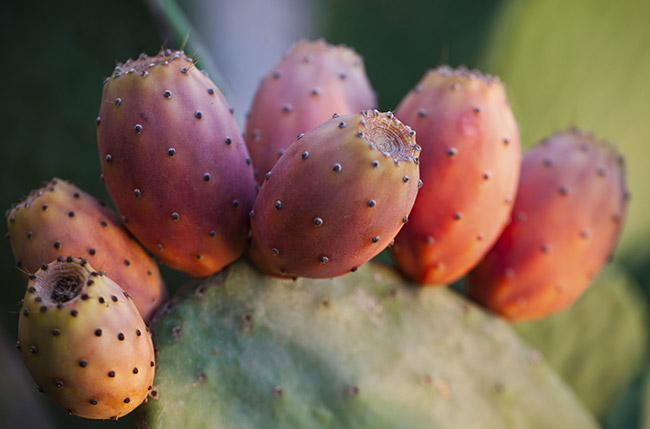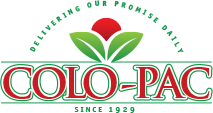
The Opuntia is a variety of cactus that is made up of over two hundred species. Most Opuntia cactus species have three edible parts: the fruit (known as the prickly pear, cactus fruit or tuna in Spanish) the pad of the cactus (or nopal) which can be treated like a vegetable, and the petals of the flowers and the leaves from the Opuntia cactus can be added to any green salad. All three parts of the Opuntia plant have been a long time staple of Mexican and Central American cuisine. Today, Opuntia products, especially the succulent fruit, can be found around the world, from North and South America, to Europe and the Middle East, this cactus fruit is slowly but surely growing in popularity. The prickly pear is especially popular today in the Mediterranean, in Greece, Italy and Malta, and they are gaining attention from young, health-conscious consumers.
The fruit of the plant is the most commonly used part of the Opuntia, and it is a surprisingly versatile fruit with a mild flavor that is similar to the flavor of kiwi, but much less acidic. It can be eaten raw with a little preparation. Prickly pears also make great candies, pies and jellies because they have a high pectin content. The juice of prickly pears is often used to brighten up drinks, both alcoholic and child-friendly. Martinis, margaritas and wine coolers can be brightened up with a teaspoon of prickly pear juice. Non-alcoholic drinks like lemonade and iced tea gain vibrancy with a tablespoon of cactus fruit juice.
When shopping for prickly pears, there are a few signs to look for to ensure it’s got a good, ripe fruit. A ripe prickly pear will feel firm to the touch. As the fruit ripens, it sheds its spines, so a fully ripe tuna will have few or no spines. Color is an important indicator as well. A green prickly pear is not quite ripe. Once they are ripe, they will turn either yellow, red or purple, depending on the variety.
Store-bought prickly pears are usually safe to handle with your bare hands, but it is a good idea to thoroughly wash them with gloves on, because there can be very small spines on the fruit that easily lodge in your skin and become very irritating. When eating the fruit raw, peel the skin off with a knife because the skin is quite tough. To peel the fruit, begin by slicing off both ends. Then either simply cut the skin off in segments, or make one lengthwise cut and pull the skin off in one long piece. The seeds in the fruit are perfectly edible, but be careful not to bite them too hard, they can hurt your teeth.
Juicing prickly pears is quite easy compared to many other fruits because of how soft the flesh of the fruit is. The only items you’ll need to juice a prickly pear is a knife and wire mesh strainer. Simply peel the fruit and mash the flesh of the fruit through the strainer to remove the seeds and the fibrous pulp.
Prickly pears can be intimidating to work with. They are messy, ugly and…prickly. They are worth the trouble though, as cactus fruit can be a tasty snack all by itself, or as a zippy addition to your favorite summer-time drinks.
The Paddle
The pad of the cactus, commonly referred to as the paddle or nopal, is typically treated as a vegetable. As with the prickly pear, store-bought paddles are generally safe to handle, but carefully washing them with gloves on is advisable. To ensure you get a high quality, fresh nopal, look for ones that have vibrant green skin with few wrinkles. A fresh cactus paddle is tender but not soft, they should be slightly springy to the touch.
When preparing nopal, after you’ve thoroughly cleaned it to remove the small spines, trim about a quarter of an inch of the plant with a vegetable peeler or knife. After that, the nopal can be treated as you’d treat vegetables like bell peppers, corn or mushrooms. They are often grilled or boiled, but you can also roast them or sauté them. Once cooked, they can be added to salads, used as a burger or pizza topping, you can put them in a taco, the sky is the limit!
Cactus Leaves and Flower Petals
The flower petals of the Opuntia cactus are generally yellow, purple or red and the leaves are green. Add them to any salad to add a splash of color. To ensure fresh, quality petals and leaves, look for ones with vibrant colors. They should feel soft to the touch, but not limp or soggy. The only preparation required is to thoroughly clean them with cool water.
There’s plenty more that can be done with cactus products, so stay tuned to our seasonal offerings updates.


 BACK TO PRODUCTS
BACK TO PRODUCTS